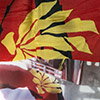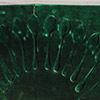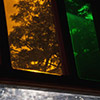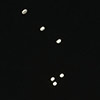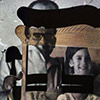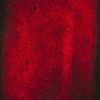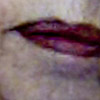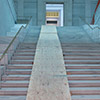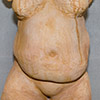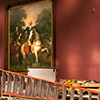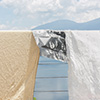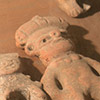
On View: September 10 - October 22, 2016
Opening Reception: Saturday, September 10, 7-9pm
Civilian Art Projects launches its 11th season with “Muriel Hasbun & Caroline Lacey: Calling to You,” a photographic exhibition about legacy, the construction of memory, and cultural identity. The exhibition opens on September 10, and will be on view until October 22, 2016. There is a public reception for the artists on Saturday, September 10th, from 7 to 9pm.
Calling to You is comprised of two bodies of photographic work by two artists with complementary, yet distinct, visions. One photographer is a mentor and teacher; the other, a student developing her own voice. Hasbun was Lacey’s teacher at the Corcoran College of Art + Design, as well as the founder of laberinto projects created both to honor the work of her mother, Janine Janowski, a pioneer and stalwart supporter of contemporary art in El Salvador, and to promote the art of Central America in the U.S. (home to 2 million Salvadorans). Janowski founded Galería El Laberinto in San Salvador in 1977 at the onset of the Civil War. Lacey now serves as assistant director for laberinto projects.
Calling to You is about the individual -- yet frequently shared -- work of Hasbun and Lacey that honors a legacy. Both artists agree that the lines of mentorship, authorship, learning and teaching are constantly blurred and crossing. They think it is more like choreography in a complicated dance to remember, identify, and communicate in a world that often loses its roots and creators.
As photographers and co-workers, Hasbun and Lacey share a near constant feedback loop of critique and questioning. And while laberinto projects and its mission to serve artists and communities across socio-cultural and national divides is an exercise in openness, which has led to learning and sharing on both sides, their artwork has remained individual. But each calls to the other, formally and through subject matter. A collaboration of mutual respect, their partnership requires a constant defining of the self and personal boundaries. Hasbun says their work together is “like mapping the labyrinth.”
Hasbun’s series, si je meurs/if I die, continues the conversation against silence and erasure that the artist has had with her mother through her work for the past thirty years, extending beyond her mother’s death a few years ago. Hasbun is convinced that art and culture and the work of memory have intrinsic value, and begin at the personal level of engagement. According to the artist, “As in earlier series, I discover, examine, and reconfigure an archive that brings the personal and the collective together, weaving a dialogue with the intimate, individual story that gives perspective to the historically-significant, public narrative of Janine’s life as a cultural promoter in El Salvador during the civil war and its aftermath, now reactivated through my socially engaged platform of laberinto projects. Both projects are inextricably bound: preserving her legacy in both intimate and public ways reinforces my belief in the power of art to construct a first person narrative that affirms an individual’s own history and culture, while galvanizing communities with a sense of collective identity.”
Lacey’s series “Entrusted” is based on work in two private, yet community collections of art: The Corcoran Gallery of Art in D.C., and Janowski’s Galería El Laberinto in El Salvador. Like Hasbun’s, her series is about legacy, memory, and the intimate nature of learning. Most of her images in some way document someone else’s artwork in situ, serving as a document of each in its place, or home. Like that of the Corcoran, laberinto is of national import, but its accumulation and preservation is based on the work of private individuals. Neither is a government-sanctioned endeavor. Individuals can chose to dismantle or ignore the history, effort, and potential of these collections and let destruction come; or they can seek to preserve, strengthen, and reinforce this shared history to inspire what is next.
Lacey, an MA graduate of the Corcoran College of Art + Design, was the lead student plaintiff in the trial to save the Corcoran from demise in 2014. She sees the complex histories of each collection connected through politics, wars, great works of art, and now through her. According to the artist, “I sat before a judge in D.C., begging to save the Corcoran from dissolution, and ran pots and pans under dozens of leaks threatening delicate works on paper in El Salvador. Because of the chaos around these upheavals, my small role was imbued with an authority I might not otherwise possess. And so I found myself in the cutting, folding, and coloring portion of making a legacy — the ever inchoate presence that is a legacy. Something which is gone is also here. These photographs sit in the loss, urgency, and yes, the sentimental; which, in its defense, is all tied up in our elementary sense of justice. Here is the recovery, the making of memory, and a question about that most fragile of human agreements: trust.”
Bios:
Muriel Hasbun is American, Salvadoran, and French. She was born in San Salvador, El Salvador. She received a MFA in Photography (1989) from George Washington University and an AB in French Literature (1983), cum laude, from Georgetown University. A 2016 Artist in Residence at the Centro Cultural de España in San Salvador, Hasbun is the recipient of numerous distinctions, including: a Smithsonian Artist Research Fellowship (2014), the Howard Chapnick Grant of the W. Eugene Smith Memorial Fund for laberinto projects (2014); Maryland State Arts Council Individual Artist Awards in Photography (2015 and 2012) and in Media (2008); a Museums Connect grant funded by the U.S. Department of State and the American Association of Museums (2011-12); an Escuela de Bellas Artes Artist in Residence in San Miguel de Allende, Mexico (2010); the Corcoran’s Outstanding Creative Research Faculty Award (2007) and a Fulbright Scholar Grant (2006-2008).
Hasbun’s photo-based work has been internationally exhibited. Venues include: the American University Museum (2016, 2008); Centro Cultural de España in San Salvador (2016, 2015, 2006); Smithsonian American Art Museum (2013, 2011); the Maier Museum of Art (2012); Light Work and Mexican Cultural Institute (2011); the MAC-Dallas and the Michael Mazzeo Gallery (2010); NYU’s Hemispheric Institute at the Centro Cultural Recoleta in Buenos Aires (2007); the Museum of Photographic Arts in San Diego (2007); Houston’s FotoFest (2006), the Corcoran Gallery of Art (2004); the 50th Venice Biennale (2003); the Centro de la Imagen in Mexico City (1999); and the Musée de l’Arles Antique at the 29ème Rencontres Internationales de la Photographie d’Arles (1998). Similarly, her photographs are in numerous private and public collections, including the Art Museum of the Americas, District of Columbia Art Bank, En Foco, Lehigh University, Smithsonian American Art Museum, University of Texas-Austin and the Bibliothèque Nationale de France. Most recently, Muriel Hasbun was Professor and Program Head of Photography at the Corcoran School of Arts & Design at GWU. She is the founder and director of laberinto projects. Si je meurs/if I die is supported in part by funding from the Montgomery County government and the Arts and Humanities Council of Montgomery County.
Caroline Lacey was born in 1989 and received her M.A. in New Media from The Corcoran College of Art + Design in 2015 and her B.A. in Art History from the University of Maryland in 2011. Her work has been included in Centro Cultural de España, “Vivencias, Legado” San Salvador, El Salvador; NEXT, Corcoran Thesis Exhibition, Washington DC.; Multiple Exposures, PHOTO ’15, Alexandria, VA.; and WPOW Annual, Foto Week DC, Washington DC. She is the assistant director of laberinto projects in El Salvador/ Washington DC. Her photographic work has appeared or will appear in The Prosecutors Movie, Resolution Photo, the Harvard Review of Latin America, elsalvador.com, The Washington Post, The Smithsonian Magazine, NPR, and Washingtonian Magazine. She was awarded the National Press Photographer’s Bob East Scholarship in 2014.
- details
- press release (PDF)
- press release (español PDF)
- Muriel Hasbun curriculum vitæ (PDF)
- Caroline Lacey curriculum vitæ (PDF)
- "In the galleries: Conversations between mother and daughter, teacher and student" -- The Washington Post
- "Critics Pick: Calling to You" -- Washington City Paper
- "At Civilian Art Projects, An Intersection Between Salvadoran and D.C. Contemporary Art" -- Washington City Paper
- "Muriel Hasbun, El Laberinto" -- El Tiempo Latino, The Washington Post
